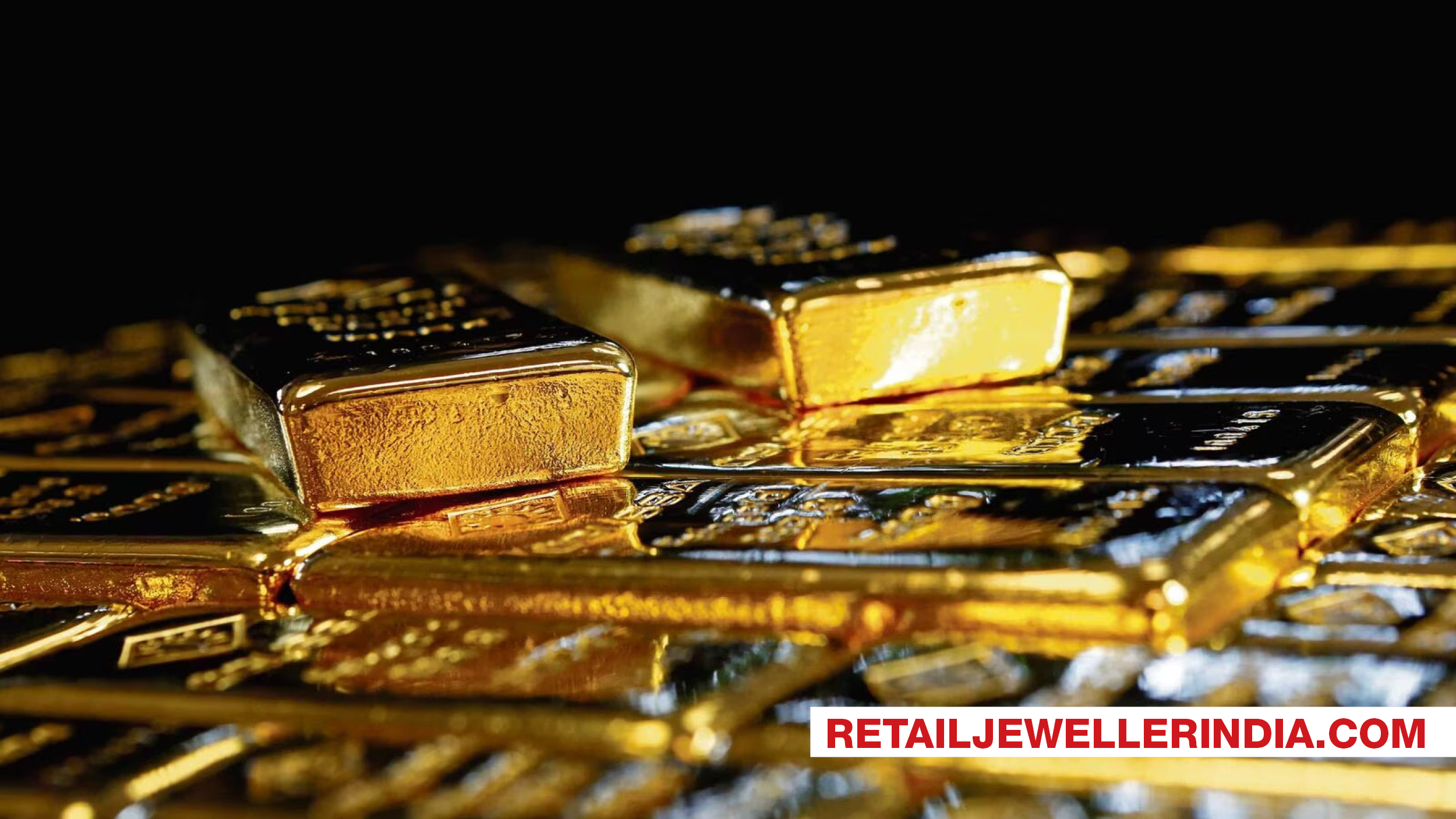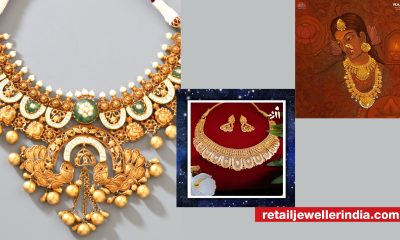Featured Articles
Digital is the future of gold in India, says Somasundaram PR

Gold’s record high rate on the back of growing complexities in the global financial market creates a new opportunity for the Indian jewellery industry. The Retail Jeweller speaks to Somasundaram PR, Managing Director, World Gold Council, to understand the fundamental shift in consumers’ outlook towards gold, the vantage of digital gold in a country that is already the second-largest bar and coin market globally and how it is driving the new narrative for the traditional yellow metal to the young
In this exclusive interaction, Somasundaram PR points out the urgent need for a regulatory framework to monitor the growing landscape of 16 digital platforms and 2.5 million gold accounts, why the industry needs to promote non-cash payments and strict compliance practices, the opportunity for India to become the jewellery karigar capital and, in turn, jeweller to the world in the next decade
By Soma Bhatta
The Retail Jeweller (TRJ): Gold prices have got a fillip post the USA bank crisis. How do you see the bull run in gold in 2023?
Somasundaram PR (SPR): Gold gained 9% in Q1 2023 but see-sawed on bond market volatility. Unprecedented rate hikes have started to break things, most notably in small US banks and the commercial real estate sector. While contained for now, it represents an increased risk of systemic escalation. With a US recession still on the cards, growing systemic risk adds to gold’s case.
TRJ: Can you tell us about India’s emerging consumer gold investment trends?
SPR: India is the second largest bar and coin market globally. Gold has historically been the investment of choice. The evolving digital ecosystem, combined with the government’s thrust on financial inclusion and social welfare, is giving a new boost to it.
When the first gold ETF was launched in 2007, it was a notable success. However, the rising equity market proved too much of a temptation and demand was soon dented. Only when the pandemic caused economic alarm did the ETF market recover, and by the end of 2021, gold ETF holdings stood at 37.6t.
Since then, ongoing geo-political tensions have reinforced the need for safe-haven assets, and the digital gold investment market has responded. Now, 16 companies offer digital gold products in India, with an estimated 2.5m gold accounts.
Gold savings and multi-asset funds offer another route into gold-backed ETFs allowing investors access to gold with a bonus interest payment at the term end. These gold-backed financial products, and others, are expected to continue their rapid development.
In summary, our love for gold, underpinned by centuries of socio-economic connection, will be strengthened in an emerging world of multiple financial complexities.

TRJ: How is World Gold Council viewing the current market scenario, and what initiatives drive the demand for gold investments?
SPR: The future of gold investments in India lies in digital. The trend has just started, and we will see many gold-backed financial products on digital that will improve access and trust and fulfil the broader objective of ‘monetisation of gold savings’.
We could see (investment) gold accumulation and small ticket purchases through digital gold buying platforms see faster growth, reinforcing the urgent need for a regulatory framework for these.
What gold in India needs for monetisation success is a cohesive set of policies that improve trust and ease. India has to eye a global role in gold trading and refining, for which trust is essential.

“The most significant advantage of digital gold is its hassle-free and safe storage, no lower limit on investment; one can use digital gold as collateral for loans, and ease of exchange anytime and anywhere for physical gold, coins, and bullions”
Somasundaram pr, Managing director, world gold council, india
TRJ: Retailers mostly try to push jewellery instead of gold (bullion) as it has more margin. Will moving gold in the investment portfolio detract from the gold jewellery business?
SPR: It is too simplistic to assume that one form of gold competes with another. The critical thing is savings in gold; each has its attraction and utility. If there were no coins, to assume all of them would buy jewellery is a bit naive. We need various types of gold investment products, channels and forms. Our past consumer research suggests that around 50% of bullion bought is eventually converted into jewellery.
TRJ: Is there any data on how much bullion is exchanged for jewellery annually?
SPR: We do not track this data.
TRJ: How are the new digital platforms enabling greater reach and a more significant market share of gold (as an investment)?
SPR: They show great potential and need a regulatory framework to be leveraged to their full potential. It is essential to understand why people use digital and how it promotes monetisation and accordingly promote it with a supportive regulatory framework.

Digital gold is gaining popularity as one can purchase gold online, and an equivalent amount is kept as physical gold in an insured vault. However, many platforms provide such storage facilities for a specified period. After the expiry of the said period, one will have to withdraw the gold or sell it. The minimum amount one can buy is as low as one rupee. Customers can sell the entire or a fraction of the gold anytime at the existing market rates. The gold is 24 karat and is hallmarked.
It ensures purity and negates the chances of fraud. Investment in the digital form of gold can bring many advantages. The most significant advantage of digital gold is its hassle-free and safe storage, no lower limit on investment; one can use digital gold as collateral for loans, and ease of exchange anytime and anywhere for physical gold, coins, and bullions.
This flexibility allows individuals looking to convert their digital assets into the physical. Gold sold is 24K, hallmarked and thus comes with 99.99% purity. Buyers do not have to worry about purity and genuineness. Chances of fraud are negated, and consumers get the value they have paid, but this will be so only when players can be regulated.
One disadvantage associated with digital gold is the lack of regulatory agencies governing rules and regulations for trading. As a result, it leaves a lot of grey areas that unscrupulous elements in the ecosystem could exploit.
“It is a serious investment for households at Rs 60K/10g. Therefore, the industry will do well to compete with the compliance practices of other sectors with a similar range of assets and align ours with it. Promoting non-cash payments for gold will enhance trust and, in the long term, help consumers”
Somasundaram pr, Managing director, world gold council, india
TRJ: What is the market’s most popular gold investment instrument, and how is it performing?
SPR: Gold coins and bars remain the most popular gold investment instrument, with over 80% of investment demand.
TRJ: What is your advice to retailers when gold is seeing a historical high? How do you see these rates impact jewellery offtake in the coming months?
SPR: With gold prices on an upwards trajectory, following best practices, adopting global standards, chasing innovation and becoming ESG compliant will be the key to the sustainable growth of the Indian gold industry. The industry should also work towards becoming ‘Jewellery karigar capital and, in turn, Jeweller to the world’ in the next decade.
It is a serious investment for households at Rs 60K/10g. Therefore, the industry will do well to compete with the compliance practices of other sectors with a similar range of assets and align ours with it. Promoting non-cash payments for gold will enhance trust and, in the long term, help consumers.
“Looking at the past fifteen years, gold in Indian rupees has delivered an annualised rate of return of 11.7%, marginally higher than equities (11.6%) and higher than returns on other asset classes such as bonds (government and corporate) and cash”
Somasundaram pr, Managing director, world gold council, india
TRJ: How is gold performing compared to other popular financial instruments?
SPR: Returns are crucial for any asset class, and gold has provided healthy returns in the long run. Looking at the past fifteen years, gold in Indian rupees has delivered an annualised rate of return of 11.7%, marginally higher than equities (11.6%) and higher than returns on other asset classes such as bonds (government and corporate) and cash. Over the last five years, gold has underperformed equities but outperformed other asset classes, such as bonds and cash.
The Retail Jeweller India

 Daily News4 weeks ago
Daily News4 weeks ago#LoveFromDad: De Beers unveils second ear-piercing drive to spur natural diamond demand among young consumers

 Exclusive3 weeks ago
Exclusive3 weeks agoUS tariff storm hits India’s gem & jewellery industry; faces major disruption threat, 1 million jobs at risk

 Wide Angle2 weeks ago
Wide Angle2 weeks agoTitan brings together Tanishq, Titan Watches and Titan Eye+ at first multi-brand store in the UAE

 Wide Angle1 month ago
Wide Angle1 month agoSaashri Jewellers ropes in actor Samantha Ruth Prabhu for grand opening of new store in Sydney





























